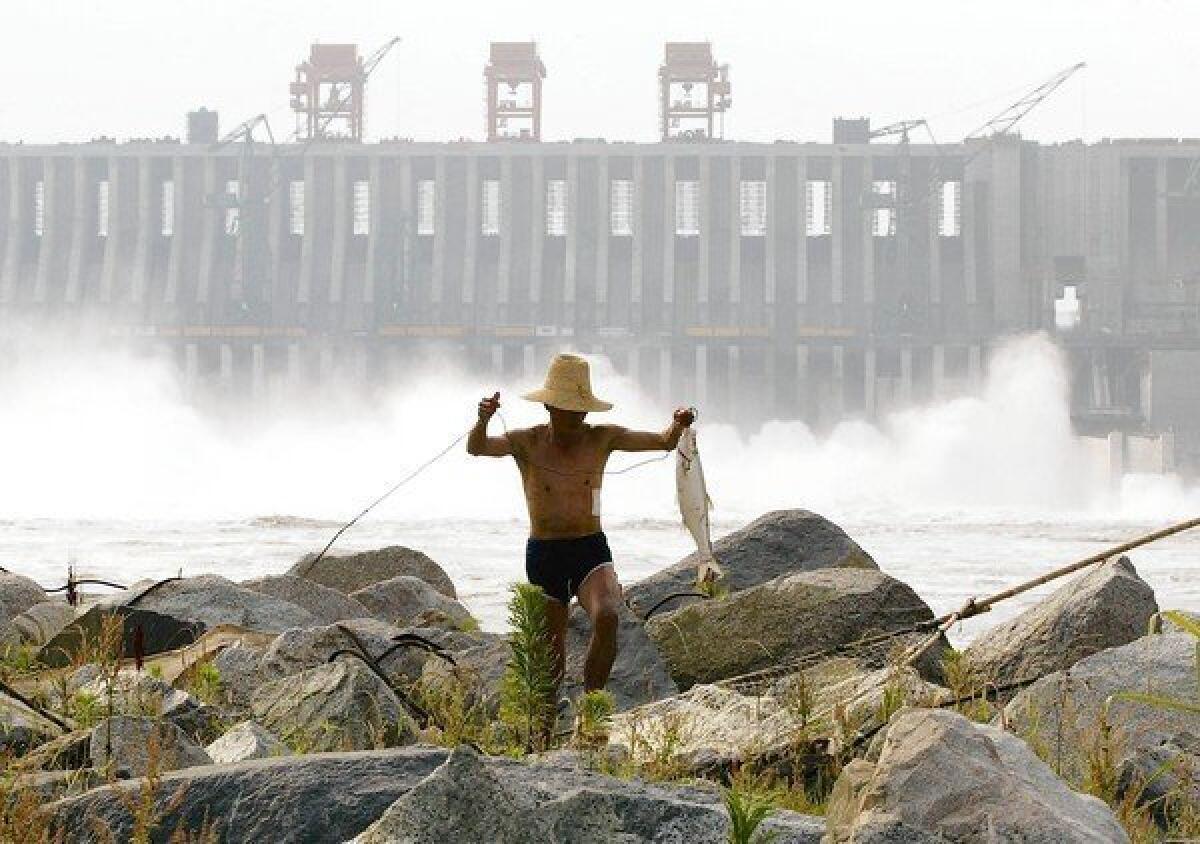China expert Peter Hessler goes to the ground in ‘Strange Stones’

- Share via
Between 2001 and 2010, Peace Corps volunteer-turned-New Yorker writer Peter Hessler delivered three entertaining, richly detailed books on China told through his interactions with everyday people. Hessler left China several years ago, moved to Colorado and now lives in Cairo, but his new book, “Strange Stones: Dispatches From East and West,” is a compilation of ground-level short stories mostly about the Middle Kingdom. Fans of his New Yorker work will find most of these dispatches familiar, though quite a few are a delight to reread.
Some, like the opening piece on the rivalry among two restaurants in the town of Luogang specializing in rat — Highest Ranking Wild Flavor Restaurant and New Eight Sceneries Wild Flavor Food City — have a timeless quality, with Hessler deftly capturing in detail the quirky (and not infrequently disturbing) aspects of eating and doing business in China.
Other tales, such as one related to youngsters migrating to work in the southern boomtown of Shenzhen in the late 1990s, or another on the nation’s preparations for the 2008 Beijing Summer Games, or a third on Yao Ming’s 2002 foray into the NBA and its ramifications in China, cannot help but feel dated.
But somehow, reading them with a few years of distance almost heightens our appreciation for just how much China, and its laobaixing, or ordinary men and women, have witnessed, built and endured over the last decade and a half. The economic boom has brought unprecedented prosperity — new roads, new public toilets, Olympic gold medals — and problems.
Hessler chose not to arrange his anecdotes chronologically, which may have robbed the compilation of a bit of its power to serve as a time-lapse documentary of China’s transformation over the last 15 years. But that is a minor quibble. More puzzling is Hessler’s decision to include five (of 18) chapters set totally outside of China. The result can be more jarring than enlightening, like a greatest hits album interspersed with obscure B-sides thrown in on a whim.
A chapter on an American, David Spindler, researching the Great Wall through painstaking hikes is followed by a 25-page piece on a Long Islander of Nepalese descent, Rajeev Goyal, who lobbies Congress to boost Peace Corps funding. Twenty-two pages on uranium mining in the town of Paradox, Colo. (its health effects and battles over a new mine), come immediately after a chapter on the Chinese city of Wushan, which is being submerged thanks to the Three Gorges Dam.
Hessler contends he chose to intersperse these stories “because I like the idea of David Spindler standing next to Rajeev Goyal, and I think the people of Wushan might have something to say to the people of Paradox.” Maybe, but some readers will find the choice dislocating, or undisciplined — one wonders whether Hessler simply wanted a vanity book of his favorite pieces over the last dozen years, even if some have only the most tenuous connection to the others.
One U.S.-set piece that does nicely complement the rest of the work is the penultimate chapter, “Go West.” This sees Hessler moving to a remote corner of Colorado, engaging with the locals and reflecting upon the differences between Chinese and Americans — and where he fits in between the cultures after so much time abroad.
Americans, he rediscovered, were more solitary yet more accomplished raconteurs, eager to share personal topics. Compared to rural Chinese, who would pepper him with queries about the United States and the West, Americans were frequently more parochial, he found to his dismay.
“At times, the lack of curiosity depressed me,” he says. “I remembered all those questions in China, where even uneducated people wanted to hear something about the outside world, and I wondered why Americans weren’t the same.”
But, he added, “it was also true that many Chinese had impressed me as virtually uninterested in themselves and their communities. They weren’t reflective — they preferred not to think hard about their own lives. That was one of the main contrasts with Americans, who constantly created stories about themselves and the places where they lived.”
Fortunately for his readers, Hessler has both a Chinese inquisitiveness and an American aptitude for storytelling. This makes “Strange Stones” a lively and worthwhile — if somewhat oddly curated — look back at China’s last 15 years.
Strange Stones
Dispatches From East and West
Peter Hessler
Harper Perennial: 354 pp., 14.99 paper
More to Read
Sign up for our Book Club newsletter
Get the latest news, events and more from the Los Angeles Times Book Club, and help us get L.A. reading and talking.
You may occasionally receive promotional content from the Los Angeles Times.








